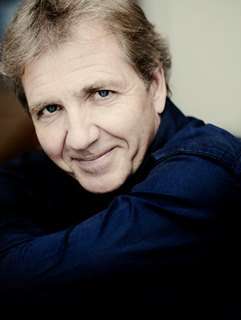|
Back
Orchestral ‘oomph’... Beethoven with stature Ottawa
Southam Hall, National Arts Centre
03/09/2016 - & March 10, 2016
Franz Joseph Haydn: Symphony No. 44 in E minor, “Trauersymphonie”
Ludwig van Beethoven: Piano Concerto No. 2 in B-flat major, Op. 19
Robert Schumann: Symphony No. 2 in C major, Op. 61
Louis Schwizgebel (piano)
National Arts Centre Orchestra, Thierry Fischer (conductor)

T. Fischer (© Marco Borggreve)
Conductor Thierry Fischer and pianist Louis Schwizgebel, the latter making his debut this week with Ottawa’s National Arts Centre Orchestra (NACO), both have roots in Switzerland and the pair have performed and recorded together with frequency. Their presentation of Beethoven’s Piano Concerto No. 2 was a felicitous one and, indeed, the evening’s highlight. While it is the second of Beethoven’s five such works for piano to be published, the Concerto in fact was the first to be composed. It tends to be less popular with soloists and sometimes receives a perfunctory, academic reading. However, this week’s performance in Ottawa was one of genuine stature.
From the start, Mr. Schwizgebel made it clear he was approaching the work as a major and serious one. His playing demonstrated an authoritative comprehension of the Concerto‘s symphonic structure as well as its lyrical, harmonic and textural elements. His tone is rich, even sensuous, and projects superbly while maintaining precision and scrupulousness, all of which suggest this 28-year old artist is already launched as an important Beethoven interpreter. The elaborate first movement cadenza must have left many in the audience hoping for a Beethoven solo recital, or CD, in the near future.
The orchestra under maestro Fischer overall supported the pianist well, though there were a few stretches when tempos were not entirely in synch, and Fischer’s proclivity for thick rather than translucent sound was not an ideal match. Nonetheless, both musicians are pros and made their collaboration work; the Thursday evening repeat performance likely will be an improvement.
Fischer, for sure, is an idiosyncratic musician who knows what he likes and gets it, even when it may not suit everyone. For the opening work, Haydn’s Symphony No. 44, he pared down the orchestra to around forty players. Yet even with this spare ensemble, the overall feel and acoustic were like those of a large Teutonic symphony orchestra with a large sound to match. There was at least genuine translucency to the strings for the first movement’s opening dialogue, while brass and winds (two horns, two oboes and one bassoon) tended to be dynamically ‘full’, if also a bit dry. Fischer’s approach was well suited to the droll second movement, an almost self-mocking Menuetto, and he toned down the ‘oomph’ factor for the third movement Adagio, allowing its fine tracery of theme and virtual variations to unfold with elegance and clarity --- this was some of the orchestra’s best playing during the entire performance. The closing Finale: Presto is contrapuntal and often boisterous and again Fischer was in his element. While the reading was not the last word on this work from Haydn’s Sturm und Drang period, it did well and enabled a glimpse of what this conductor should do with an orchestra when he has worked with the players for a while.
After intermission it was Schumann’s Symphony No. 2, a problematic composition dating from a spell of mental illness. The problem, however, is not any indication of mental, emotional or psychological distress per se, but rather an overall scattering of styles and moods which never quite connect, though they’re interesting to analyse (and pleasant to hear). The opening movement, with its yearning start leading to a more aggressive, rhythmic theme, is repetitious and forced. The second movement Scherzo prefigures Bruckner and Tchaikovsky, the former in dogmatic ‘thumping’ mode then, for the trio, the latter in the kind of ‘pizzicato brass’ Tchaikovsky used for the third movement trio in his Symphony No. 4. The third movement, Adagio anticipates Mahler in one of his more melancholy pastoral slow movements – it’s easy to imagine cowbells v and the slowly calibrated diminuendo at its conclusion was another of the evening’s highlights. The finale, Allegro molto vivace, is structurally complex, a kind of rondo and sonata form combined (something which Schumann’s friend, Chopin, managed much more artfully in his Ballade No. 4 for piano). The energy often becomes congested, and while Mr. Fischer’s penchant for ‘full’ sound was appropriate, the performance overall lacked detail, clarity and focus, though the raw, almost primal energy definitely pleased the audience.
While this week’s NACO concert was not a great one, it was always interesting, and introduced to the audience a piano soloist most will be eager to hear again.
Charles Pope Jr.
|